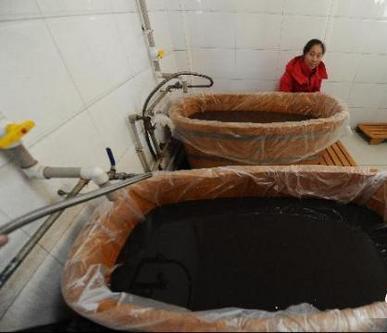Qinghai effectively curbs spread of hydatid disease
Northwest China's Qinghai Province has effectively curtailed the epidemic and spread of the hydatid disease, according to information released by the Health and Family Planning Commission of the province on May 3.
Over 90 percent of cases of alveolar hydatid disease occur on the Qinghai-Tibet Plateau, and the 10-year mortality rate for patients who go untreated of the disease known as "insect cancer" is as high as 94 percent. The surgical procedure used to treat the disease can be called the pinnacle of liver medical science.
According to statistics from the Qinghai Provincial Health and Family Planning Commission, Qinghai has screened a total of 2.07 million people for the disease and diagnosed 2,054 new cases since the beginning of 2017, and 875 people have undergone surgery while the rest are being treated with medication.
Monitoring data shows that the average prevalence rate in the population of Qinghai decreased from 0.63 percent in 2012 to 0.30 percent nowadays. The prevalence rates in the populations of Yushu and Golog fell from 3.74 percent and 4.54 percent respectfully in 2012 to 1.19 percent and 2.53 percent respectively in 2017.
"Patients with hydatid disease are rendered unable to work, which increases the economic burden," said Yang Wanjun, director of the Health and Family Planning Commission of Gande County in the Golog Tibetan Autonomous Prefecture. "Last year, the screening rate for hydatid disease covered basically 100 percent of the county, and key populations were screened two or three times."
"Now, patients can receive free medications, and those who require surgery can receive basically free treatment," Yang Wanjun said. "Patients have a high rate of being cured and low recurrence rate. I hope we will be able to improve the health of nomads."
In 2018, Qinghai will conduct extensive exchange and cooperation with Tibet and Sichuan on hydatid disease to undertake applied research into the biological characteristics and diagnostic reagents of the disease and to implement full coverage of patient screening.
Editor: Tommy Tan.
Your Comment
Name E-mailRelated News
-
;
-
-

-
Rising foreign patients accept Tibetan medicated baths
"If people want to have medicated baths in spring or autumn in our hospital, they must make an appointment one to two months in advance. Most of the people who come here have tried the baths before."
-
-
-

-
Qinghai to have full coverage of Chinese and Tibetan medicine hosp
This year, Qinghai is accelerating projects that aim to improve service capacities at primary Chinese and Tibetan medicine hospitals, achieving full coverage across the province of community health service centers and township hospitals for traditional medicine.
-
Based in Lhasa, Tibet Vista is a Tibet travel agency that specialized in Tibet permit, and Tibet tours for both private and group travelers at a local price!
•4 Days Lhasa City Group Tour from USD 460 •8 Days Everest Base Camp Group Tour from USD 850 •15 Days Mt.Kailash Group Tour from USD 1780 •2016 Tibet Train Tours from Beijing, Shanghai, Chengdu, Xining,etc










